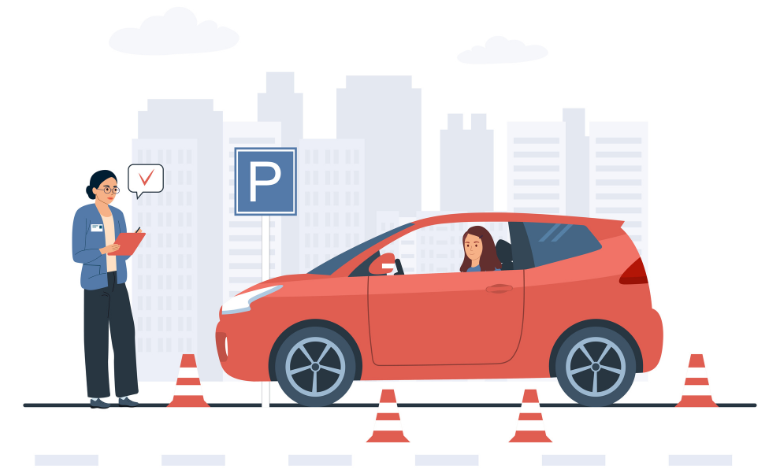Transportation has changed and developed a lot over the years. However, there’s one stubborn issue that continues to threaten road safety driver distractions. In Australia, distractions have become an important concern. A distraction is any activity that diverts attention away from driving. It can be anything from the allure of smartphones to the myriad problems of daily lives. No matter what the type or cause of distraction they pose a great risk to not just the drivers but everyone on the road too. Driving schools in Australia put a lot of emphasis on teaching the novice drivers to minimize distractions. In fact there are many driving instructor courses that focus on techniques to minimize distractions too. This is mainly to ensure that instructors also know all about distractions and can teach the students various strategies to handle them. The idea is to learn more about distractions and address them accordingly. In this article we will explore the types of distractions their impact on the drivers, and how to address them properly.
Types of Driver Distractions
There can be many reasons for driver distractions, each with its own set of risks. But they can be broadly classified into three categories: visual distractions, cognitive distractions, and manual distractions. As the name suggests, visual distractions make you look away from the road which can be very dangerous for a driver. They can be anything from an attractive hoarding to an unexpected movement around you. Cognitive distractions disturb your mental focus making it hard to drive properly and safely. Imagine driving after a big and emotional fight or after facing a big setback at work. You’re already mentally disturbed, focusing on driving in such situations can be quite challenging. Manual distractions make the driver take their hands off the wheel. It can be something as simple as eating, drinking, or looking for a possession in your backseat or something a bit more complicated like setting up a destination in your vehicle’s navigation system.
How They Affect the Drivers
Distractions are fatal; they can lead to loss of lives. Statistics show that distracted driving is the main cause of 16% of serious road casualties in Australia. Approximately 60% of road users admit to using their phones while driving and think that sending a text message while driving is the biggest distraction. Another data shows that 1 out of 5 drivers killed on Australian roads had been drunk while driving. Speeding is the cause of 47% of road deaths in Western Australia. In fact, a research by Monash University Accident Research Center shows that reducing speeds by 11% can likely reduce road deaths by 40%. This sobering reality shows how profound the consequences of distracted driving can be. Beyond the human toll, distractions exact an economic burden and carry legal implications for drivers and authorities alike. These distractions also have many economic and legal implications for the drivers as well as the authorities. Facing the challenges of driver distractions and defeating them has become absolutely imperative.
Strategies for Addressing Driver Distractions
To address driver distractions we need to take a multifaceted approach. Here are some ways in which we can approach and tackle this issue proactively:
Legal Measures
To tackle distractions, drivers must minimize the possibilities of getting distracted and that requires dedication and determination. Most people would ignore it simply because it takes up time or requires some effort. Legislative measures can be a great motivation to make drivers understand the importance of being focused when driving. Measures like banning handheld devices while driving and penalties for driving drunk or fatigued along with other enforcement measures can go a long way in reducing distracted driving. Driving schools across the country emphasize this in their driving lessons, and driving instructor courses also focus on instructors being aware of all related legal measures to educate the drivers properly.
Education and Awareness Campaigns
Simply imposing bans and penalties might stop some people, but it won’t affect all. Educating the drivers to understand and tackle distractions is very important. Driving schools do a good job of it by adding this issue to their driving lessons. Depending on the city, the rules and legal measures for distracted driving also change. So, the responsibility of educating drivers falls on that city’s schools. A driving instructor in Sydney would know more about the distracted driving situation in Sydney. Other than driving lessons, the government and authorities should also focus on organizing awareness campaigns to spread the word.
Embracing Technology
Technological innovations have made so many aspects of life easier for us. Embracing technology in driving can also help reduce distractions. Using audio input for setting location, answering calls, or sending messages can stop you from taking your hands off the wheels.There are many other ways in which integrating the right technology can help you focus more.
Behavioral Changes
The root cause of distraction is human tendency and behavior. If drivers train themselves to stay focused while driving and not worry about anything else, distractions would not succeed at all. Practicing mindfulness techniques and striving to increase focus and stamina also works. It is also good to cultivate a habit of checking for things that can cause distractions in your vehicle before you leave.
Conclusion
To achieve road safety, it is imperative to understand and address driver distractions. From educating the drivers and taking legislative measures to striving to bring behavioral changes, there’s a lot we can do to combat distractions. Many driving institutions like the Academy of Road Safety have special sections on distracted driving in their driving instructor courses too. By taking such a comprehensive approach, we can establish a driving culture that puts safety above everything else and learns to face the challenges of driver distractions head-on!

